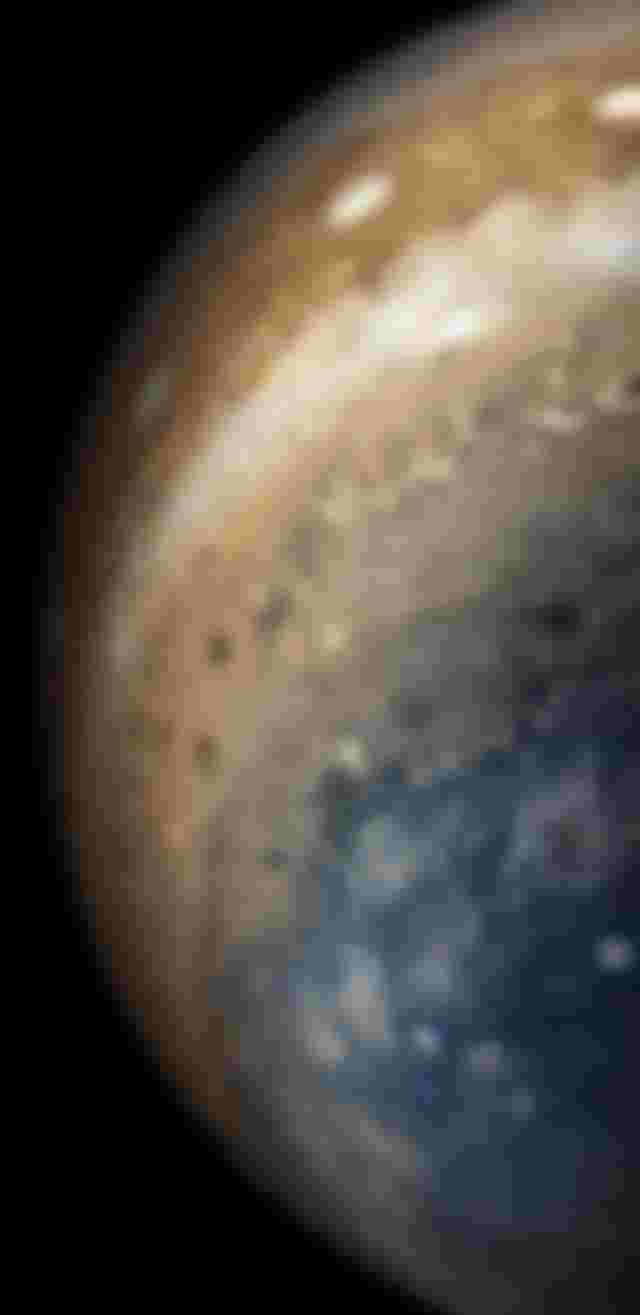
The story of the planet -Jupiter
The mass of all the planets, satellites and asteroids in the solar system is two and a half times the mass of one Jupiter. Inside the huge belly of Jupiter, 1300 Earths will move effortlessly. Its extraordinary gravity prevents any other planet from being born in the vicinity, only to be crushed if it tries to be. All the asteroids in the vicinity, Jupiter's chest, can't touch the earth after the comet is really close. It is as if His Majesty the King is carrying out justice in his kingdom.
Jupiter's vast atmosphere is strangely beautiful, playing all the wonderful patterns of different colors there. There are all sorts of bizarre mysterious clouds, red eyes staring at the Great Red Spot. That is the biggest storm in the solar system, so big that two worlds can get inside it. For at least three hundred years, this great whirlwind has been whistling on the chest of Jupiter. If you wear a normal space suit, you will not be able to reach the edge of the planet. Intense radiation will kill you from a distance of three lakh kilometers.
So if you jump into the mysterious clouds of a monstrous planet after a very good, radiation proof, heat resistant, pressure proof deadly powerful space suit, what do you see? Let's turn around from Jupiter.
Jupiter's gravity is deadly, you will continue to fall on Jupiter at two and a half times the speed of the earth. First you will be surrounded by a cloud of white ammonia. If you smell it, you will smell like bitter urine. Looking outside will give you light sunlight, but it will not keep you warm. The air at this level is unusually cold, with an outside temperature of -150 degrees Celsius.
Gradually the temperature will continue to rise, as well as the pressure. White clouds will be replaced by dark brown ammonium hydrosulfide and ammonium sulfide gas. The distant sun will give a twinkling light like a dense cloudy sky. At a depth of about 250 km, you will reach the area of the deadliest cyclone in Jupiter. It won't take long for you to become 420 by eating Nakanichubani in a wind speed of 420 kilometer per hour.
And if you can go 120 kilometers, you will reach the deepest place of Jupiter sent by any man-sent vehicle so far. In 1995, NASA's Galileo probe went so far into the gas giant's stomach that it was finally destroyed under extreme pressure. If you are not destroyed, you can go a little further, new surprises will be waiting for you.
The lower you go, the higher the temperature. The pressure will continue to increase. At some point all around will become dense black darkness. This place is surrounded by water clouds. They will be struck by intense lightning from time to time. This electric light will be your only light source.
At one point the heat will continue to rise, the pressure will increase. If the outer pressure is equal to one thousand atmospheres, then it is time to leave the outer world. All radio signals sent from this layer are absorbed in the dense, thick atmosphere above.
You are reading, reading. After about twelve hours the air around will be so thick that you can swim. You are surrounded by a liquid or gaseous strange thing, its name is supercritical fluid. The outside temperature is now equal to the surface of the sun. That will increase.
When the pressure increases it will be roughly equal to two million atmospheres, you will reach the world of metallic hydrogen. Under abnormal pressure, at extreme temperatures, hydrogen has become a liquid metal here, thawing and electricity is playing in its chest. Hydrogen is no longer a binary atomic gas, it is now a metal. The source of Jupiter's unusually strong magnetism is this metallic hydrogen.
The pressure will increase further. As the temperature rises, the surface of the sun will increase fivefold. This time you will probably touch the ground first. Scientists think that this giant gas giant has a solid rock core crushed under extreme heat at the very depths. Just like a small nut in a lot of almond shell, the nucleus sleeping deep in the cell.
It is thought that many, many years ago, the magnificent planet Jupiter formed grains around this small rocky core.
@Telesfor @Omar @TheRandomRewarder Sir if you inspired me i will be encouraged and try to write better in the next

In a similar manner, the ancient Greeks named the planet after Zeus, the king of the Greek pantheon. Jupiter helped revolutionize the way we saw the universe and ourselves in 1610, when Galileo discovered Jupiter's four large moons — Io, Europa, Ganymede and Callisto, now known as the Galilean moons.
Jupiter is the fifth planet from the Sun and the largest in the Solar System. It is a ... to have about as large a diameter as a planet of its composition and evolutionary history can achieve.